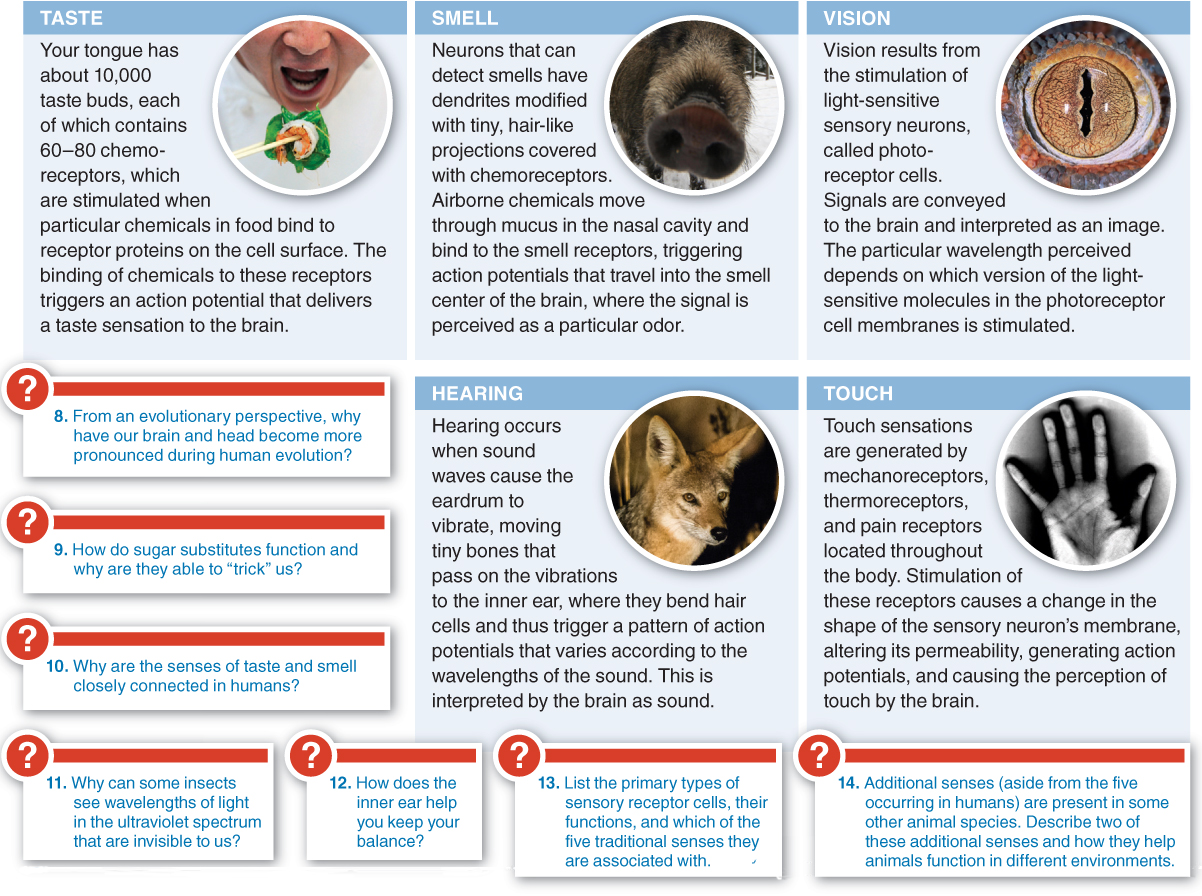23.8–23.14
23.8–Our senses detect and transmit stimuli.
The process by which all our senses work is basically the same. A modified dendrite on a sensory neuron is stimulated by some aspect of the outside world.

966
Q
The term “synapse” describes:
- a) the release of neurotransmitter into a synaptic cleft.
- b) a presynaptic neuron and its neurotransmitters.
- c) the membrane depolarization that occurs at gaps in the myelin sheath.
- d) the interface between a neuron and another neuron, a muscle cell, or a gland.
- e) None of the above.

Neurotransmitters in a synaptic cleft have all of the following possible fates except:
- a) reuptake by the presynaptic neuron.
- b) enzymatic breakdown in the synaptic cleft.
- c) inactivation by acetylcholine in the synaptic cleft.
- d) binding to a receptor in the postsynaptic cell membrane.
- e) All of the above are possible fates of neurotransmitters in a synaptic cleft.

An action potential in the optic nerve triggered by light striking the eye is the same as:
- a) an action potential triggered by air vibrating in the ear.
- b) an action potential triggered by salt on the tongue.
- c) an action potential triggered by an odorous substance entering the nose.
- d) Answers a), b), and c) are correct.
- e) None of the above are correct.

When you put a piece of chocolate on your tongue, your brain registers a sensation of sweetness. What aspect of a molecule is responsible for its having a particular taste?
- a) the molecule’s shape
- b) the total number of protons in the molecule
- c) the number of hydrogen bonds in the molecule (more hydrogen bonds = sweeter taste)
- d) the ratio of covalent bonds to ionic bonds joining the atoms of the molecule
- e) the speed of melting in your mouth
